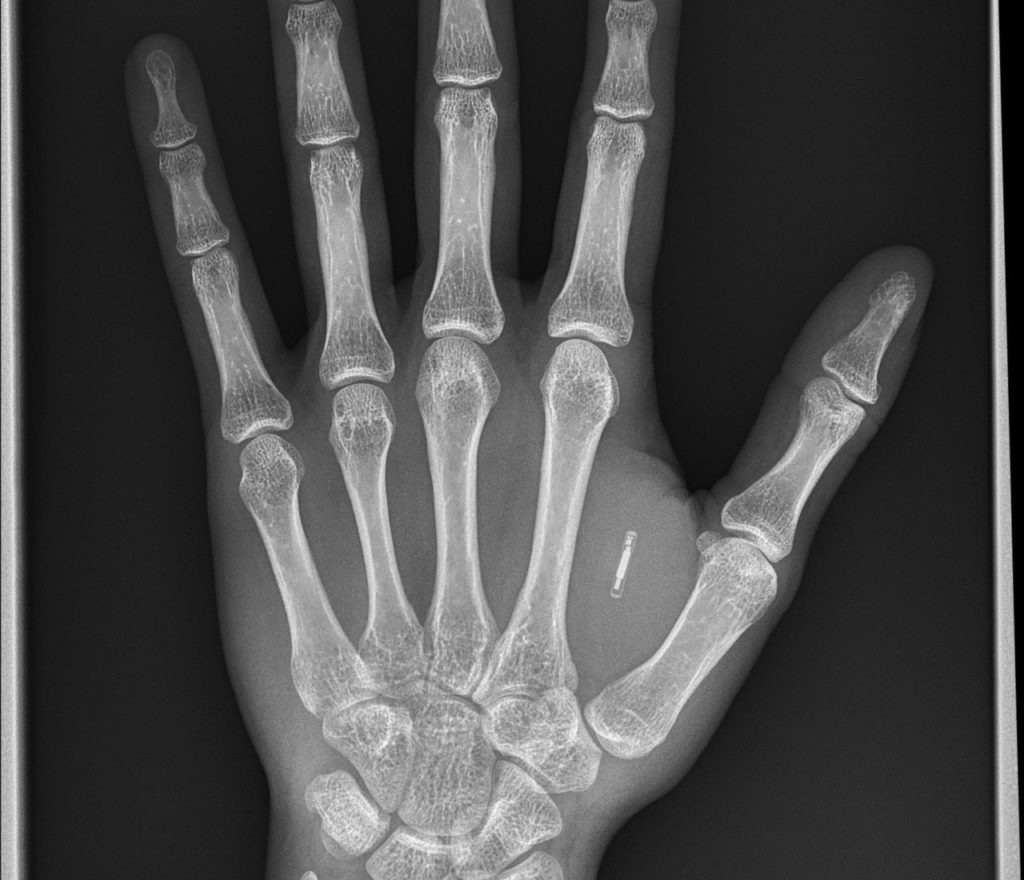How do identity chip implants work?
by Scott Dutfield · 15/11/2020
Could these tiny internal mini-computers be the new frontier in contactless identification?

How comfortable would you feel about walking around with an implanted chip encrypted with your personal information? Radio-frequency identification (RFID) is not a recent technological revelation, with the technology developed back in the 1970s. They’re most widely used today as the chips implanted beneath the skin of our household pets, placed as tags to track products or used in security passcards. However, in recent years there has been a growing trend making its way beneath the skin of human hands.
RFID technology has allowed for the development of implantable near-field communication (NFC) chips in humans. Within the implantable capsule, each around the same size as a grain of rice, a tiny microchip stores data, waiting to be deciphered by an external reader. When scanned by the reader the internal chip sends radio waves back to the reader, which is then translated into meaningful data. This data can come in the form of security permissions to RFID-locked doors and contactless payments, and has even been suggested for use in Alzheimer’s patients to source medical information.
But how close are we to using this technology in our everyday lives? Well, it’s closer than you might think. Back in 2017 a tech company called Three Square Market in the US became the first to offer microchips to its staff as a way to replace the commonly used security cards. 50 workers reportedly underwent the procedure, allowing them not only to open doors but also access computers and even purchase food and drinks.
Project Cyborg
Taking RFID technology and applying it to human modification became reality in 1998 when British engineer Professor Kevin Warwick and his team at the University of Reading created the first ‘cyborg’. Using himself as the first test subject to receive an RFID implant, ‘Project Cyborg’ saw Warwick undergo a surgery whereby a silicon transponder was placed in his forearm. The newly implanted chip allowed Warwick to walk the halls of the cybernetics department and access doors with ease using the unique signature of the signal emitted by the chip beneath his skin. Taking the implanted technology one step further, in 2002 Warwick underwent a surgery that implanted a 100-electrode array in the nerves of his arm, allowing Warwick to control a wheelchair and an artificial hand. Warwick’s controversial experiments paved the way to understanding how the human body responds to implanted technology and its future applications.
Digital Virus
The human body is typically well equipped to tackle infection by various viruses thanks to our complex immune system. However, by embedding technology such as RFID chips beneath the skin, could we be inadvertently inviting the possibility of another kind of virus infecting our bodies? With the ability to hold only two kilobytes or so of data, there’s not much room to store antivirus or protection software to stop hackers from stealing the chips’ entrusted information. Simply standing close to an implanted hand with a reader could collect data, unbeknownst to the owner, a fear also expressed in recent years about contactless card payments. However, back in 2010 a researcher at the University of Reading purposely hacked his implanted RFID chip to house a piece of malware, making him the first human to be infected with a computer virus. Although of course this virus bore no effect on his biological health, the virus could be passed onto the external readers.
This article was originally published in How It Works issue 138
For more science and technology articles, pick up the latest copy of How It Works from all good retailers or from our website now. If you have a tablet or smartphone, you can also download the digital version onto your iOS or Android device. To make sure you never miss an issue of How It Works magazine, subscribe today!





